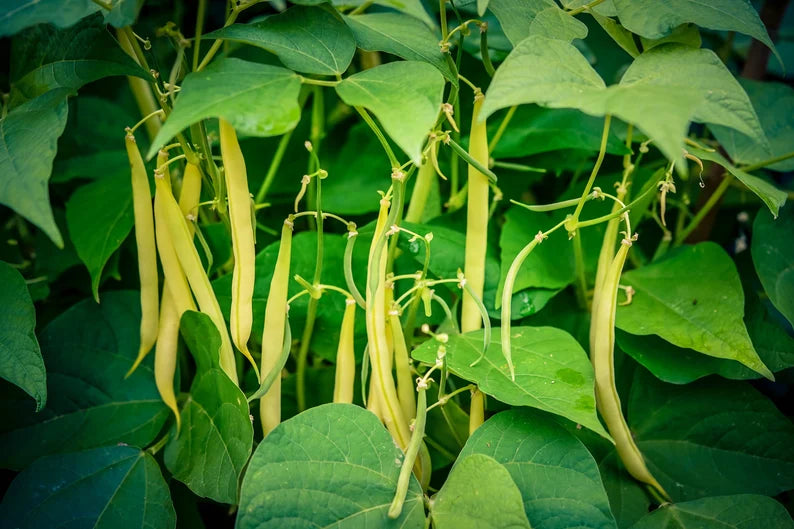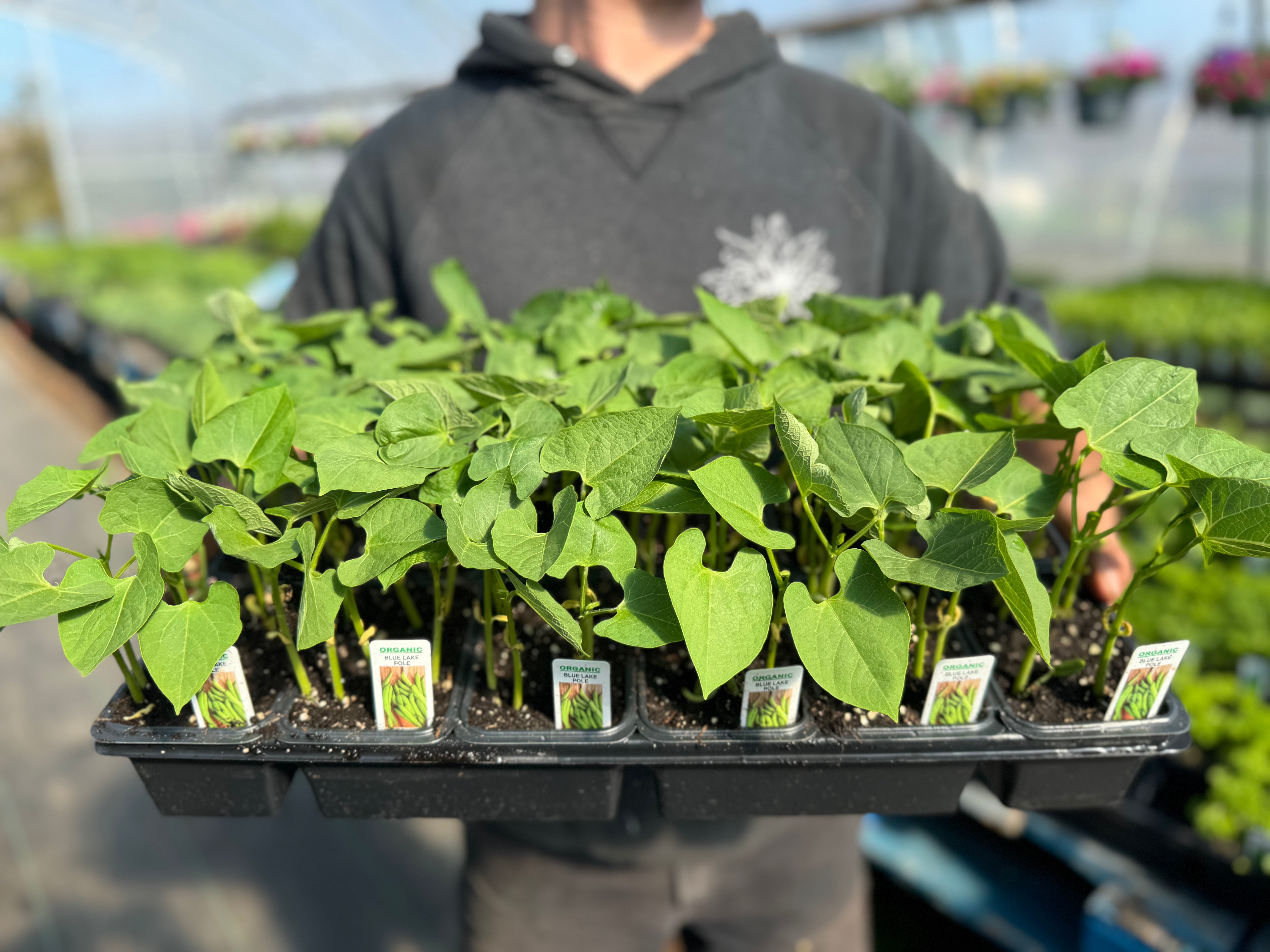


Bean Seedlings
Growing bean plants can be a rewarding and relatively easy gardening activity. Beans are warm-season crops that thrive in temperatures between 70°F (21°C) and 85°F (29°C). They are typically grown in the spring and summer months when the soil has warmed up.
Tips on how to grow Beans:
1. Choose the right variety: There are many different types of beans, including bush beans, pole beans, and snap beans. Choose a variety that suits your growing conditions and preferences.
2. Plant your seedlings after the danger of frost has passed and the soil has warmed up. Beans are very temperature sensitive, and do not react well to cold nights or cool winds. Wait until we are consistently receiving 19 degree nights before planting. Space them according to the variety's recommended spacing, typically 2-4 inches apart.
3. Provide the right growing conditions: Beans thrive in warm temperatures and full sun. Choose a spot in your garden that receives at least 6-8 hours of direct sunlight per day. The soil should be well-drained and rich in organic matter. Avoid planting beans in areas with heavy clay soil.
4. Watering: Beans require consistent moisture to grow well. Water the plants deeply, providing about 1 inch of water per week. Avoid overhead watering, as it can increase the risk of disease. Water the plants at the base to keep the leaves dry.
5. Mulching: Apply a layer of organic mulch, such as straw or wood chips, around the bean plants. Mulch helps retain moisture, suppress weeds, and regulate soil temperature.
6. Support for pole beans: If you are growing pole beans, provide support for the vines to climb. Use trellises, stakes, or a bean teepee to support the plants. This will save space and make harvesting easier.
7. Fertilizing: Beans are nitrogen-fixing plants, which means they can take nitrogen from the air and convert it into a form that is usable by plants. However, if your soil is lacking in nutrients, you can apply a balanced fertilizer before planting or side-dress with compost or a nitrogen-rich fertilizer during the growing season.
8. Pest and disease control: Beans can be susceptible to pests such as aphids, bean beetles, and spider mites. Regularly inspect the plants for signs of pests and use organic pest control methods if necessary. Proper spacing, good air circulation, and mulching can help prevent diseases such as powdery mildew.
9. Harvesting: Beans are ready to harvest when the pods are firm, crisp, and fully developed. Harvest the beans regularly to encourage continuous production. Pick the beans when they are young and tender for the best flavour.
Our Varieties:
Green and Yellow bush beans
Bush beans, also known as snap beans or green beans, are a type of bean plant that grows in a compact, bushy form. Bush beans have a compact growth habit, with a bushy form that typically reaches a height of 1-2 feet. They do not require support or trellising like pole beans. The leaves of bush beans are typically medium-sized and have a smooth texture. They are usually dark green in color.
Bush beans produce small, white or purple flowers. These flowers are self-pollinating, meaning they do not require bees or other pollinators for fruit set. The pods of bush beans are long and slender, ranging in color from green to yellow or purple, depending on the variety. The pods are harvested when they are young and tender, before the seeds inside have fully developed.
Harvest the beans regularly to encourage continuous production. Pick the beans when they are young and tender for the best flavor. Avoid letting the pods mature and develop seeds, as this can signal the plant to stop producing new pods.
To extend the harvest season, you can practice succession planting with bush beans. This involves planting new batches of seeds every 2-3 weeks throughout the growing season. This way, you can have a continuous supply of fresh beans.


